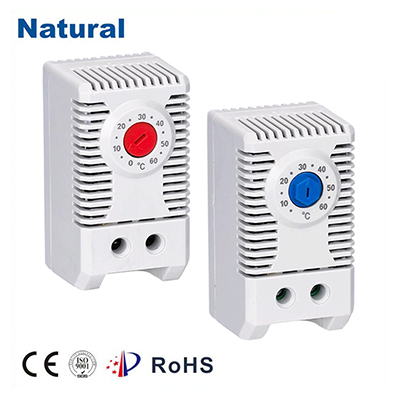In the world of temperature control, precision is paramount. Whether it’s keeping your morning coffee at the perfect warmth or maintaining the ideal temperature in industrial processes, the right tools are essential. Bimetal thermostats have been a trusted choice for achieving precise temperature control for decades. In this article, we will explore the fascinating world of bimetal thermostats, their working principles, applications, and the advantages they offer.

The Science Behind Bimetal Thermostats Bimetal thermostats are ingenious devices that rely on the differential expansion of two different metals to regulate temperature. The core of a bimetal thermostat consists of two metal strips bonded together. These metal strips have different coefficients of thermal expansion, which means they expand and contract at different rates when exposed to temperature changes. When the temperature changes, one metal strip expands or contracts more than the other, causing the bonded strip to bend. This bending action is utilized to control electrical contacts, either opening or closing a circuit. Depending on the application, bimetal thermostats can be configured for either heating or cooling control. Applications Across Industries The versatility of bimetal thermostats has led to their widespread use in various industries. Here are a few examples: 1. Household Appliances Bimetal thermostats are commonly found in household appliances like ovens, refrigerators, and water heaters. They ensure that these appliances maintain the desired temperature levels, guaranteeing efficient and safe operation. 2. HVAC Systems In heating, ventilation, and air conditioning (HVAC) systems, bimetal thermostats are used to regulate room temperatures. They help create comfortable living and working environments while saving energy and reducing operational costs. 3. Industrial Processes Industries such as manufacturing and chemical processing rely on bimetal thermostats to maintain precise temperatures in various processes. This ensures product quality, safety, and efficiency in production. 4. Automotive Industry Bimetal thermostats are also used in vehicles to control engine temperatures, ensuring that engines operate within safe temperature ranges and optimizing fuel efficiency. Advantages of Bimetal Thermostats Bimetal thermostats offer several advantages that make them a preferred choice in temperature control: 1. Reliability Bimetal thermostats are known for their durability and reliability. They can withstand harsh environmental conditions and continue to operate accurately over extended periods. 2. Cost-Effectiveness Compared to some other temperature control technologies, bimetal thermostats are cost-effective, making them an attractive choice for a wide range of applications. 3. Simplicity Their simple yet effective design makes bimetal thermostats easy to install and maintain. They require minimal calibration and adjustment, reducing operational complexity. 4. Wide Temperature Range Bimetal thermostats are available in various models, offering precise temperature control across a wide range of temperatures, from sub-zero to high-temperature applications. In conclusion, bimetal thermostats have been the unsung heroes of temperature control for decades. Their ability to provide reliable and precise temperature regulation across various industries and applications has earned them a well-deserved place in the world of engineering and technology. As technology continues to advance, bimetal thermostats remain a timeless and invaluable tool for maintaining the perfect temperature in our daily lives.